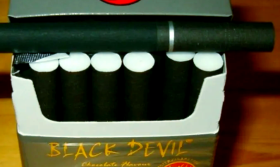"489. Quitting Smoking: Take a 'Quitcation' to Mark Your Progress"
Introduction
Quitting smoking is one of the most challenging yet rewarding journeys a person can undertake. The physical and psychological dependence on nicotine makes it difficult to break free, but with the right strategies, success is possible. One innovative approach to marking progress and reinforcing commitment is taking a "Quitcation"—a dedicated break or getaway that celebrates milestones in your smoke-free journey.
This article explores the concept of a Quitcation, its benefits, and how to plan one effectively. Whether you're on day one or day 489, this unique strategy can help solidify your progress and keep you motivated.
What Is a Quitcation?
A Quitcation (a blend of "quit" and "vacation") is a purposeful trip or retreat designed to celebrate your smoke-free achievements. Unlike a traditional vacation, a Quitcation focuses on reinforcing healthy habits, reducing stress, and rewarding yourself for overcoming cravings.
Why Take a Quitcation?
- Celebrate Milestones – Whether it’s 7 days, 30 days, or 489 days, acknowledging progress is crucial for long-term success.
- Reduce Triggers – A change of environment helps avoid smoking cues (e.g., work stress, social settings).
- Recharge Mentally – Quitting smoking is mentally taxing; a getaway provides relaxation and reflection.
- Build New Habits – Engaging in healthy activities (hiking, yoga, spa treatments) replaces old smoking routines.
How to Plan Your Quitcation
1. Choose the Right Time
- Early Stages (First 30 Days): A short weekend retreat can help manage withdrawal symptoms.
- Mid-Journey (3-6 Months): A longer trip reinforces commitment as cravings decrease.
- Long-Term (1+ Year): A luxurious getaway rewards perseverance and solidifies a smoke-free identity.
2. Pick a Smoke-Free Destination
Select a location that supports your goals:
- Nature Retreats – National parks, beaches, or mountains promote relaxation and physical activity.
- Wellness Resorts – Spas and meditation centers offer stress-relief alternatives.
- Urban Escapes – Cultural cities with smoke-free policies (e.g., museums, theaters).
3. Plan Healthy Activities
Replace smoking breaks with:
- Exercise – Hiking, swimming, cycling.
- Mindfulness – Yoga, meditation, journaling.
- Creative Outlets – Painting, cooking classes, photography.
4. Budget Wisely
Calculate how much money you’ve saved by not buying cigarettes and allocate some for your Quitcation.
5. Bring Support (If Needed)
Invite a non-smoking friend or join a retreat with like-minded individuals.
Success Stories: Real-Life Quitcations
Case Study 1: Mark’s Mountain Escape
After 100 days smoke-free, Mark booked a cabin in the Rockies. He spent his days hiking and journaling, reinforcing his commitment to health.
Case Study 2: Sarah’s Spa Weekend
At the 6-month mark, Sarah treated herself to a luxury spa. Massages and aromatherapy replaced her old stress-relief habit.
Overcoming Challenges
- Cravings on the Road – Pack nicotine gum or use distraction techniques.
- Social Pressure – Choose smoke-free accommodations and activities.
- Guilt About Spending – Remember: Investing in health is priceless.
Conclusion
A Quitcation is more than just a vacation—it’s a powerful tool to mark progress, reinforce commitment, and reward yourself for breaking free from smoking. Whether it’s a weekend getaway or an extended retreat, planning a trip around your smoke-free milestones can make quitting more enjoyable and sustainable.

Take the leap. Celebrate your success. Your smoke-free life deserves it.
Tags:
QuitSmoking #SmokeFreeLife #Quitcation #HealthAndWellness #NicotineFree #SelfImprovement #HealthyLiving #AddictionRecovery #Mindfulness #TravelForHealth
Word Count: ~1000
This article provides an engaging, actionable guide for smokers looking to celebrate their progress in a meaningful way. Let me know if you'd like any refinements!












